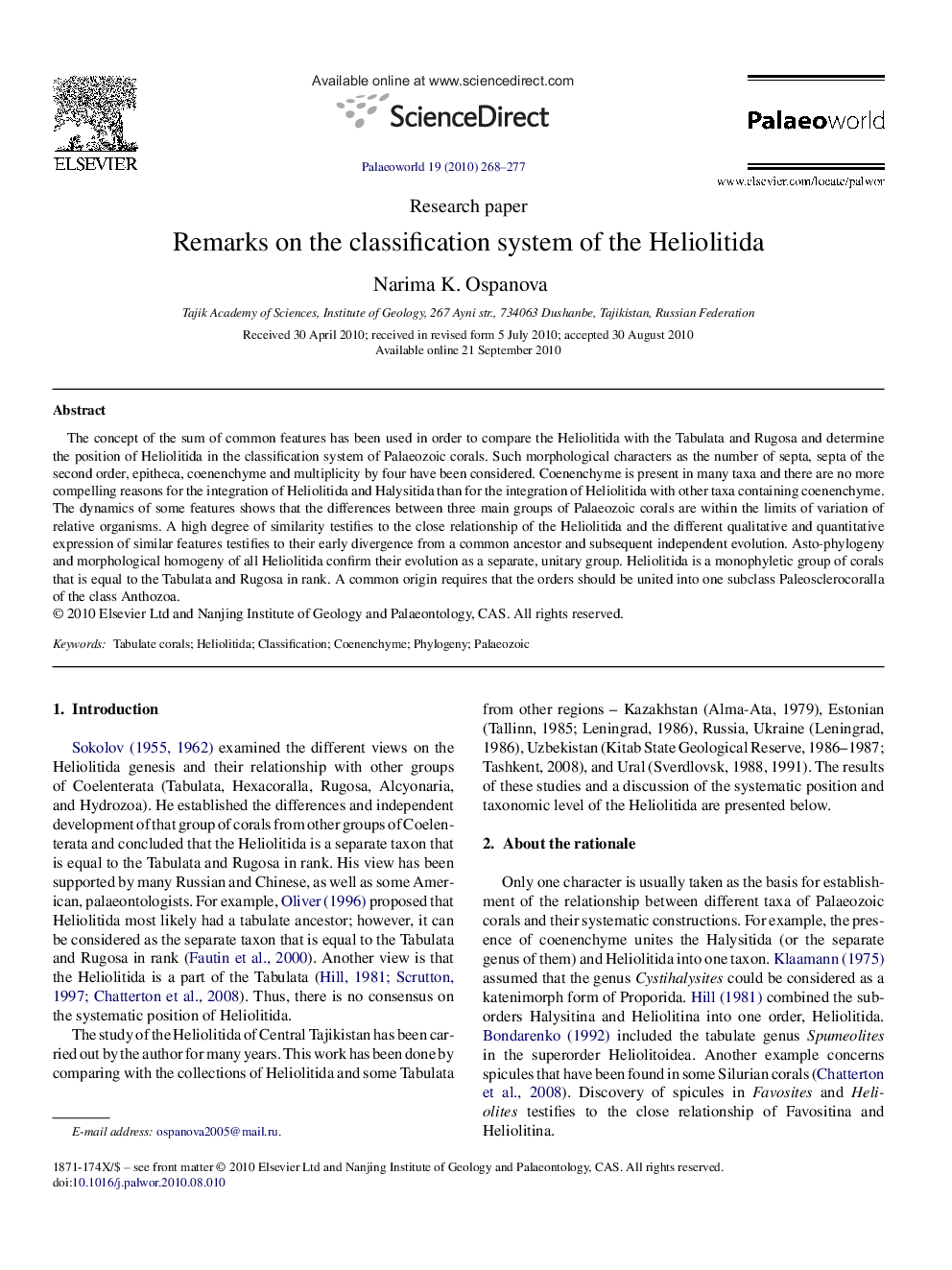| Article ID | Journal | Published Year | Pages | File Type |
|---|---|---|---|---|
| 4749823 | Palaeoworld | 2010 | 10 Pages |
Abstract
The concept of the sum of common features has been used in order to compare the Heliolitida with the Tabulata and Rugosa and determine the position of Heliolitida in the classification system of Palaeozoic corals. Such morphological characters as the number of septa, septa of the second order, epitheca, coenenchyme and multiplicity by four have been considered. Coenenchyme is present in many taxa and there are no more compelling reasons for the integration of Heliolitida and Halysitida than for the integration of Heliolitida with other taxa containing coenenchyme. The dynamics of some features shows that the differences between three main groups of Palaeozoic corals are within the limits of variation of relative organisms. A high degree of similarity testifies to the close relationship of the Heliolitida and the different qualitative and quantitative expression of similar features testifies to their early divergence from a common ancestor and subsequent independent evolution. Asto-phylogeny and morphological homogeny of all Heliolitida confirm their evolution as a separate, unitary group. Heliolitida is a monophyletic group of corals that is equal to the Tabulata and Rugosa in rank. A common origin requires that the orders should be united into one subclass Paleosclerocoralla of the class Anthozoa.
Keywords
Related Topics
Physical Sciences and Engineering
Earth and Planetary Sciences
Palaeontology
Authors
Narima K. Ospanova,
